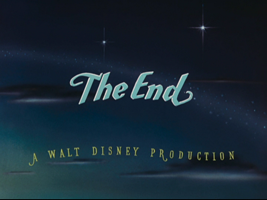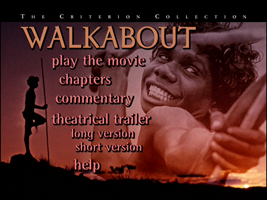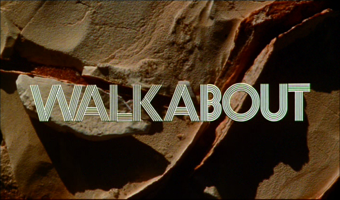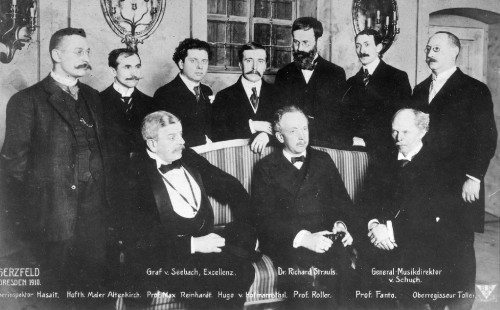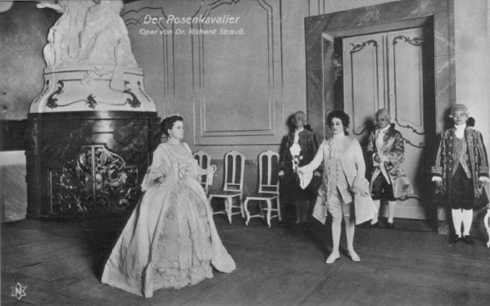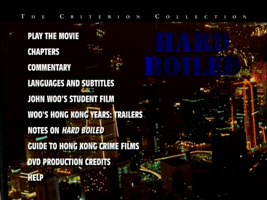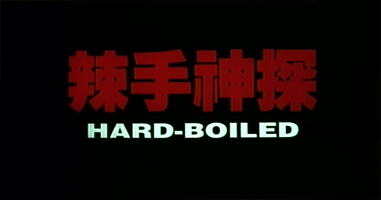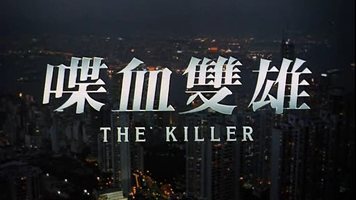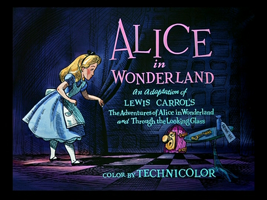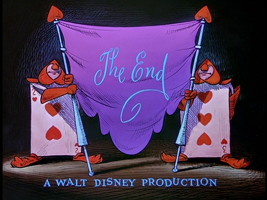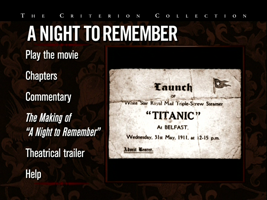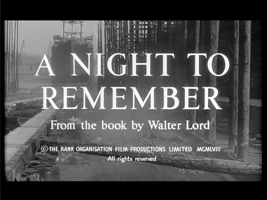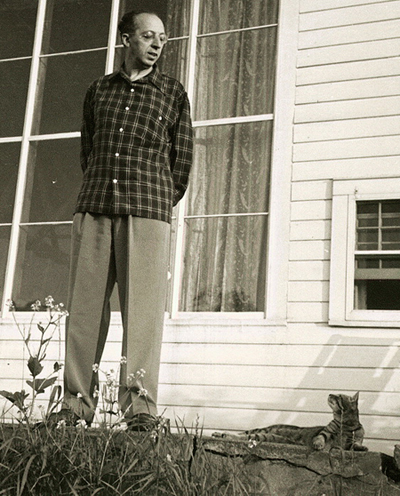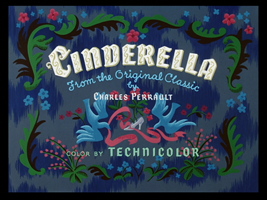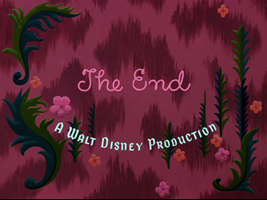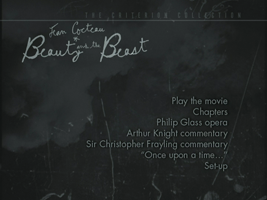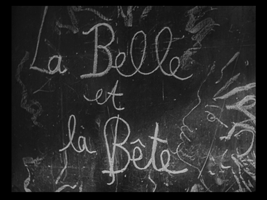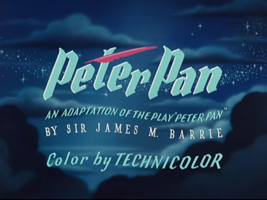
ADAM This might be my new favorite.
BETH I liked it a lot.
BROOM I did too.
ADAM It was awesome.
BETH That dog is amazing.
BROOM The dog is amazing?
BETH It’s taking care of those kids.
BROOM That is remarkable.
BETH I just said that because I thought it would be funny to say that.
ADAM The remarkable thing about the movie is that it makes both childhood and adulthood seem unappealing, but does so in a way that’s totally charming. Well, maybe not “unappealing,” but they’re both mixed bags, like life is. It does not feel like a fairy tale.
BETH That’s true. Neither is presented as better; neither is presented as the obvious choice.
BROOM I was waiting for the moment when they would stab me in the heart with the fact that my childhood was gone, but they never did it. I think they intentionally avoided telling the adults in the audience “you’re in the bad part of your lives, now,” or telling children that growing up is for losers.
ADAM It’s too easy to do that. As Hook does unabashedly.
BROOM As I was saying earlier, I saw the beginning of Hook the other day, but I don’t remember exactly how it ends. You said it ends with him throwing away his cell phone? But he does go back to being a father again; it doesn’t with him actually choosing childhood over adulthood.
ADAM Yeah, but it’s about being a childlike father.
BROOM Wouldn’t you say that this Peter Pan was also saying that it’s good to remember your childhood and not be a grouch?
ADAM Yes. But being a child here seemed chaotic, alternately fun and depressing, which is what it is like to be a child.
BROOM It seems like we’re all in agreement that the correct way to talk about this movie is in terms of allegory about childhood and adulthood. As a kid I didn’t like the Peter Pan story very much, and I didn’t like this movie very much, because –
ADAM He’s a dick.
BETH He’s a show-off.
BROOM No, because who is he and why do I care about him? And more to the point, what is Neverland? There are pirates there, and Indians, and boys wearing animal costumes, and mermaids. It seemed arbitrary, like a grab-bag of stuff. Which is in fact the point; it’s supposed to suggest the imaginations of children, who have He-Man fight Superman. They just mix stuff up. Neverland is a place where Indians and mermaids live. But as a kid, I just thought, “why is this movie giving me this mish-mash? There’s no specific fantasy there for me to get into.” Now, as an adult, I can appreciate that the whole thing suggests childhood.
BETH Well, those things, Indians and pirates – particularly Indians – are specific to the fifties.
BROOM But they come, I believe, from the original material, from the turn of the century.
BETH Really? The Indians too?
BROOM I think to British children, American Indians are all the more exotic.
ADAM I think it was all, you know, savagery in its most delightful forms. And it is pretty delightful.
BROOM As I’m saying, I enjoyed it now. But as a kid I didn’t understand what it was supposed to add up to. I think it only makes sense at a remove from childhood, because it’s a depiction of childhood as seen by adults.
ADAM I imagine I would have felt resentful of Peter Pan as a child, because he was effortlessly cooler than I could ever be. But I also probably would have had a crush on Peter Pan. I think this is the first Disney character on whom we could legitimately have a romantic crush.
BROOM I don’t know about that, man.
BETH I didn’t really like him.
BROOM I didn’t even see him as “cool.” I don’t think the concept of “cool” plays into this movie.
BETH He was like the kid at school who tried to get everyone to laugh at him.
ADAM And did! Everyone wanted to be his friend, and all the girls all wanted to nuzzle with him!
BETH Well, I never liked those kids.
BROOM He embodies a perfect child-charisma – he’s the “spirit of youth,” or whatever she says at the beginning – but what kind of person is he actually?
BETH He’s a hero; he saves damsels in distress pretty frequently.
BROOM Yeah, but just because it’s what there is to do. He always shows that he doesn’t care about anything. “Yeah, okay, I guess I’ll let you go.” “You’re banished forever! Okay, for a week then.”
BETH Well, he’s a kid.
ADAM He’s thoughtless.
BROOM He’s just the spirit of childhood, which is not actually something I have a crush on, Adam. Perv.
ADAM I would have, as a child, had a crush on him.
BROOM A charisma crush. A friend crush.
ADAM No.
BROOM He’s got pointed ears; he’s not even human.
ADAM He does still have a trace of “Casey at the Bat” face.
BETH His face is not cute. He has no nose.
BROOM He’s an imp; he’s not supposed to be “cute.” You just have a crush on force of personality.
ADAM Well, that’s true. But it’s a particularly boyish, male force of personality. This would have been a better movie than Alice in Wonderland to watch with Mike.
BROOM I would have been interested to hear what Mike had to say about this, actually. But let’s segue from that into the sexual politics, which were clearly part of the movie, and yet I’m not sure I could summarize what they were. Female jealousy was a big part of the plot. Tinkerbell has an apparently sexual sense of possessiveness of Peter Pan.
BETH And then later Wendy does too.
ADAM Well, she can’t help herself. Even though she knows better.
BROOM But Wendy is apparently pre-sexual. There’s nothing flirtatious about her interaction with Peter at all. But she wants to give him a kiss. I didn’t really understand where in her development she is.
ADAM It’s not like she wants to have sex with him; she just wants him to treat her more specially than the other girls.
BETH Right.
BROOM But then there are mermaids, who are all about being sex objects. They have crushes on Peter Pan, who seems immune to their charms. He just likes attention. And then they’re jealous of Wendy, who doesn’t understand why. Or maybe she does; I don’t know what she understands.
BETH I think Wendy is in that nebulous place between girlhood and adulthood. She’s like Britney Spears. “Not yet a woman…” – what is it?
BROOM “No longer a girl…”? [ed.: “I’m Not a Girl, Not Yet a Woman.”]
ADAM I thought the sexual politics were pretty subtle and interesting. It was both totally sexist but also about the electric interaction of men and women. Women are seen as civilizing but also… It seemed a little like a Katherine Heigl role.
BROOM I haven’t seen any of those movies.
ADAM I didn’t see Knocked Up, but I gather that this is essentially how Knocked Up works, plot-wise.
BROOM This is how Knocked Up works plot-wise?
ADAM The interactions. Did you see Superbad?
BROOM and BETH No.
ADAM Well, then this won’t mean anything to you. You know, it’s all about these boastful but insecure slobby boys. At the end, they meet the girls they have crushes on at the mall, and they go off with the respective girls, but they cast a backward look over their shoulders at each other. They want to go off with these girls, but they’re conflicted about it. And an intrinsic part of growing up is becoming sexualized and leaving your playmates for your mates.
BROOM We saw exactly that in Bambi.
ADAM Yes.
BROOM But here that never happened. They’re not at that stage yet.
ADAM They’re not quite there yet, but we know they’ll get there. As Wendy says, they’re “just not quite ready yet.”
BROOM When Wendy is awakened from bed by a boy, and then they’re eagerly talking together in her bedroom in the middle of the night, and she tells this boy she wants to give him a kiss, it’s almost confused. Who does she think he is, that she wants to give him a kiss? And who does he think she is, that he doesn’t want anything from her but still wants to show her around? Their relationship to each other is abstracted. She loves the idea of Peter Pan, but up until then she thought he was just someone to tell stories about.
BETH Well, that’s like, you know, Davy Jones appearing in your bedroom. You’d say, “Oh! It’s you! Can I kiss you?”
ADAM Davy Jones??
BETH Davy Jones from the Monkees.
ADAM Oh!
BROOM You thought she meant the locker owner?
ADAM I was confused. Yes, it is a lot like that. It’s like the Jonas Brothers appeared in your bedroom. For our younger blog readers.
BROOM Her fantasy about Peter Pan is just that she’d get to talk to him. And then when he does appear, he immediately starts saying sexist stuff to her – “girls talk too much!”
ADAM And she sort of takes it – as you would, as a girl at that age in the presence of a charismatic boy – but she sort of doesn’t. She seems to vacillate between those things. You can understand; she takes these sexist barbs, but you can tell that she resents them.
BROOM What do you make of the fact that sexual roles are a recurring element in the “red man” scene? We can talk about the rest of the scene in a minute. I mean, the racist elements of the scene are so ridiculous and obvious they hardly need to be talked about.
ADAM They’re incidental.
BROOM They’re incidental to the fact that the real point of the scene is that the squaw keeps telling Wendy that she can’t participate in this kind of fun.
ADAM And the movie doesn’t really disagree with that.
BROOM Is the idea that she’s more grown up than these boys, and that she has responsibilities in the adult world, while they’re having this childish sort of fun? Or is that she’s a woman and will never be able to have fun? What does it mean?
BETH All of the men were having that sort of fun. It wasn’t just the boys.
BROOM Well, the Indian men were not mature beings.
BETH Who knows what they were? They weren’t really characters. That Indian woman wasn’t partying either; she was just standing around giving orders.
BROOM And then in the middle of that song, we see the sexy young Indian girl and then the mother-in-law who’s a hag, and “that’s the first time the red man said ‘ugh,'” – which, as Adam said, is typical fifties humor – but it’s also about whether or not women really fit into that society. That scene as a whole sends a weird series of signals. I mean, I know they didn’t think about it quite that seriously – this is all the sort of stuff that if someone were saying it, I’d want to say, “It’s a Disney movie!”
ADAM But Disney movies teach us how to be men and women, as much as anything does.
BROOM And that’s clearly the correct way to talk about Bambi. Yes, this movie clearly thought about these issues, at some level. This was definitely the most sophisticated script so far.
ADAM Yes. It was ambiguous. And it really packed a lot of adventure into seventy-five minutes.
BETH I thought that too. Things just kept happening.
ADAM There was not a dull moment in this movie.
BROOM There was also, notably, nothing at all artsy in it. And the fact that it was so successful on its own terms while totally eschewing that stuff – no pink elephants, no falling down a rabbit hole, no ballets, nothing abstract – probably set the tone for the direction they’re going to go after this. Because they nailed this, which didn’t incorporate any of that aspect of aesthetic ambition.
BETH Maybe I’m wrong, but why is this movie not more popular? Is it popular? It seems like we’ve all seen it just once. It’s not a “beloved favorite.”
BROOM I remember seeing it in middle school on one of the occasions that our neglectful chorus teacher just had us watch a movie, and being shocked by the “Red Man” song, and thinking, “did I really ever see this as a kid?” And I’m honestly not sure I ever did. But that was definitely the last time I had seen it.
ADAM Yeah, I assume that scene makes it unsalvageable. It’s too much to just cut it out like the negro unicorns.
BROOM I don’t think I’d want my kids watching this one.
BETH Until they were how old?
BROOM I don’t know. A little older.
BETH Ten?
BROOM It’s emotionally inapplicable for a little kid. This goes back to my comment from before that when I was a kid I asked “who is Peter Pan? Why should I like him? Why should I like pirates and Indians and things that don’t go together?” It’s young-adult content, but presented like it’s for seven-year-olds. So there’s a mismatch there.
ADAM I think this may be the first Disney cartoon in which we are shown a murder.
BROOM When he shot that guy, you could sort of feel the Disney studio winding up in anticipation – “get ready, folks… is he really going to shoot a guy?… Yes he is!” Though it is off screen. There’s also a shooting death in Bambi of course, but that’s traumatic. This was a completely comic, pointless murder. And there was lots of throwing of knives directly at the faces of the characters.
ADAM And when they almost kill Wendy, because Tinkerbell the jealous bitch has lied to them.
BROOM Tinkerbell is not a sympathetic character at any point in the movie – except that she throws the bomb away from Peter Pan. But only because she wants to keep him for her own. Her love for him is not admirable.
ADAM She’s like a Bond female villain.
BROOM And she’s clearly one of these pin-up drawing bodies.
BETH But she has that moment of thinking she’s too fat.
BROOM Several times she’s not happy about her butt. She stands on a mirror and thinks her butt is too big. But her butt has clearly been drawn with loving attention by some animator. When she gets stuck in the keyhole, we just happen to see her underpants and the crease of her buttocks.
ADAM It’s upsetting to me that she is the only character from this movie that Disney has seen fit to market, and that they’re marketing her as the “bad girl” – you know, as the next stage of the princess fixation.
BROOM She’s as close to a Bratz as they’ve got. She’s an oversexed girl with no maturity.
BETH But who is she having sex with? No one.
BROOM She doesn’t have anything to do with the actual act of sex; she’s just sexual and sexually possessive. Of Peter Pan, who’s oblivious. She’s Daisy Mae to his Lil’ Abner.
ADAM It’s a depressing statement about both maleness and femaleness, in the same way that it’s a depressing statement about both childhood and adulthood. But at the same time, there’s something resonant about it.
BROOM Beth and I were having a conversation about Cinderella after our recorded conversation, about the fact that Cinderella was telling people how to be 50s people; that the greater materialism in the movie, the emphasis on the dress, was a specifically 50s thing, and 40s kids wouldn’t have felt that in the same way.
ADAM Whereas this was totally unmaterialistic.
BROOM It wasn’t materialistic, yet it was still “totally 50s,” as you said at one point about some joke. Do you feel like the sexual dynamics and the childhood/adulthood dynamics – the movie’s idea of what it means to be a person – has dated? Because even though it felt so 50s, I can’t identify any aspect of it except for the obvious racism –
ADAM And sexism.
BROOM Yes. Which of course are big and serious issues; they’re why I wouldn’t want to show it to too young a kid. But do you feel like what it was saying about life, beyond that, was limited to a certain era in the American psyche?
ADAM No!
BETH No, I don’t think so.
ADAM I thought it was very penetrating.
BROOM In the moment when the father said, “you’re going to grow up; you’re going to have your own bedroom,” I was struck by that being surprisingly real. “Oh yeah, there actually is a moment when you suddenly grow up.”
ADAM The father’s not a very sympathetic spokesperson for growing up, but the mother is.
BETH And their house is!
BROOM And what does it mean that they’re being raised by a dog? The world of fantasy only comes to life after they go to sleep – the whole thing is clearly Wendy’s dream – but the dog really is their Nana!
ADAM But the father understands that that’s a little improper, because he says to Nana that, “you know, you’re a dog.” Can we talk about the gay domestic violence aspect of the movie?
BROOM Let me try to figure out what he’s talking about!
ADAM Namely the relationship between Smee and Captain Hook. It seemed to me an early prototype for what would be parodied in the Smithers-Mr. Burns relationship.
BROOM I get what Smithers-Mr. Burns is a joke about, but I saw Smee and Captain Hook as totally sexless.
ADAM Well, of course they’re sexless. But the joke of Mr. Burns and Smithers is that it makes explicit what’s here an unacknowledged joke.
BROOM But Mr. Smee does not adore Captain Hook. He would rather not be caught up in his plans.
ADAM I think he’s overwhelmed by him. You know, “I wish I knew how to quit you.”
BROOM I don’t know about that. I think he’s a simpleton and he really would rather just go back to business as usual. He’s like Sancho. This relationship is really Sancho Panza and Don Quixote, which I guess you could say is the prototype for the Smithers-Burns gay joke, but it’s really “I like being around a powerful guy, but this is ridiculous.”
ADAM “You’ve gone too far this time.”
BROOM He keeps saying “Why can’t we go back to sea? Why do we have to be obsessed with killing Peter Pan?” And he’s a drunk.
ADAM He’s not a gay role model.
BROOM I think he may be yet another Irishman.
ADAM But he’s a sort of waddling, effeminate Irishman.
BROOM I didn’t see him as effeminate. He’s just an idiot.
ADAM Like that first scene, where everyone else in the crew is laughing at him while he’s doing housemaid work with his ridiculous little hat.
BROOM I know he is another Sterling Holloway voice [ed. WRONG! You are confusing Sterling Holloway with Bill Thompson – the White Rabbit, as opposed to the Cheshire Cat].
ADAM I think Hook is sort of effeminate too.
BETH Hook is effeminate. He has a collection of fancy hooks.
BROOM One of them was a nutcracker. They went by so fast I didn’t get to see what the others were. I love that he plays the clavichord. Not just because it’s a joke that he’s playing with a hook, but just the idea of it, that he chooses to make it part of his seduction of Tinkerbell to punctuate himself with chords.
ADAM He is a mincing queen.
BROOM He’s genuinely good with the sword. He’s not a total sham as a threatening figure.
ADAM Neither is uncle Scar.
BROOM But Scar is a queen because his ego is tied up in being catty – no pun intended! Captain Hook isn’t like that. He doesn’t have ego that way. He has all this fine stuff, but he never really struts. Does he? He just likes to do things the proper way. “Get me my coat!”
BETH But he does seem like he has that in him.
ADAM He’s like a whimpering baby as soon as he’s touched.
BROOM Yes, he’s a fool. He’s ridiculously afraid of the crocodile.
ADAM If I didn’t already know the whole crocodile story, it would be hard to pick up. It goes by pretty fast.
BROOM Yes. Speaking of things from Peter Pan that we know about but not from this movie: the most famous thing in Peter Pan is that you, the audience, have to clap your hands to save Tinkerbell. So here we have them clearly heading toward that moment; he’s approaching her and she’s just a faintly blinking light, and he’s saying, “I care about you more than anything in the world” – and then there’s an abrupt transition back to the pirate ship, and when Peter Pan shows up, Tinkerbell is fine. Do you think they made a scene where we were supposed to clap our hands, and then decided that breaking the fourth wall for audience participation was not something they wanted to do?
ADAM She’s so unpleasant that maybe nobody would have clapped.
BETH I think it’s probably just to keep the running time down.
BROOM There’s a second disc with other material, but I don’t think we’re going to get that from Netflix. I’ll look it up to see if that scene ever existed, and then I’ll link to the page I find… right here. [Sorry, no link; I can’t find anything conclusive. The commentary on the DVD at that point has one of the animators saying that when he saw the 1924 Peter Pan as a kid, he thought it was stupid and embarrassing that they tried to get the audience to clap, and wanted to see what would happen if they let Tinkerbell die.]
ADAM Okay, I’m gonna walk back some of my “Captain Hook is totally effeminate,” because you’re right, he’s more of a dictatorial bully than he is a… you know, mincing dictatorial bully. Maybe I’m just hypersensitive to anything gay.
BROOM Don’t get me wrong: I love this stuff, I love saying that and joking about it. I just don’t get it from them.
ADAM I just thought it was latent in there, but maybe it’s less latent than I’m saying.
BROOM If there were going to be gay characters in this movie, it would be them. But I didn’t get those signals.
ADAM Well, the mermaids, maybe. You know, “Things are getting interesting.”
BROOM One of those three mermaids was a lesbian. She was just playing along so that she’d be accepted by her friends. The blonde mermaid actually has a secret crush on the brunette mermaid. Something I liked about the movie: I keep critiquing how well they do humans, and I thought that Wendy in particular was the best human they’ve done yet, bar none.
BETH She looked really good. Though she looked a little bit older than I think she was supposed to be.
BROOM Well, it was Alice in Wonderland two years later. I believe it was the same actress.
ADAM John and Michael looked good too. Michael was genuinely cute.
BROOM You kept giggling at his cute lines as though he were an actual child.
BETH He was very cute.
BROOM He was. And the conceit of John being a proper English boy was enjoyable.
BETH Like Harry Potter.
BROOM Like Harry Potter, but even moreso, to the point of it being a joke.
ADAM He’s a little bit of a Percy Weasley type. But he has a good heart. I guess Percy Weasley ultimately has a good heart.
BROOM Percy Weasley would have signed on with the pirates.
BETH True.
BROOM Not only were the people animated better, but the storyboarding and staging – such that slapstick and mayhem became the means by which the plot was forwarded – was better here than anywhere before. I said about Cinderella that the king and his assistant had slapstick staging that I liked, but that there was still a lot of boring staging with the sisters. where they just stood and talked. Here, every scene somehow was conveyed in a hugely kinetic way.
ADAM You chuckled at Captain Hook being pursued by the crocodile, which was pretty obvious but still well done. It was actually suspenseful whether he was going to get eaten.
BROOM There a couple clever bits with the crocodile, where they went for that comic third beat. They’d do something twice, and then they’d go for that extra third one, which felt like a contemporary sense of humor. There were all sorts of satisfying visual choices, like when Captain Hook screams and his face fills the whole screen, or when he’s pointing at the watch and it’s slowly moving toward the camera.
ADAM In an earlier movie, when they had Wendy singing to the boys, it would have just been Wendy singing to the boys, and the whole plot would have slowed down. Here you get that, but you also get the pirates sneaking up on them, at the same time. They manage to interweave those by having Smee crying about his mother, and it’s more satisfying.
BROOM I think that song was maybe my least favorite part of the movie. It seemed like it had originally been designed to be another “Baby Mine,” an attempt to get everyone to cry about mothers, but then they second-guessed it and put other stuff in. Now nobody would cry at it; the scene doesn’t let you cry. So then you wonder, why do we have to listen to this soggy song? I understand that it serves the function of revealing that the children all do want to go back to the world where they’re going to grow up.
ADAM And it makes the Lost Boys into people. It complicates them.
BROOM Thematically, it gives them all a moment where they actually make the decision that they are okay with growing up. Peter Pan says, “if you leave, you’re going to grow up and you’re never going to be allowed to come back,” and they say, “okay,” and go up the stairs and he doesn’t. But it’s not that great a song. I like the other songs, though. I like “You Can Fly.” I sometimes find myself singing it.
ADAM Yes. There’s a moment in it where the music precipitously as they plunge down, and it’s totally effective. My heart sort of dropped with it.
BROOM There are a couple of things in the song’s arrangement that move me that way. The swoops are one of them. Another is that every time they get to a certain place in the melody, the tempo gets a little push, which really gets you in the pit of your stomach. “Think of all the joy you’ll find / when you leave the world behind / and bid your cares goodbye!” – on that phrase the tempo jumps up in excitement. When I was a kid, on the video that we had, of a Disney Christmas special or something that used this clip, the tape was damaged right at the high point. “And bid your cares goodbye…You can flyyRRR” – the tape was suddenly distorted and turned into something else. So when I get there now, it feels especially peaceful and free, like floating in the air, that it doesn’t happen. Because I was trained to expect the dream to get ground up at that point.
ADAM The visuals in that sequence, although they’re not self-consciously poetic, are really very pretty and satisfying.
BROOM The backgrounds throughout are really atmospheric, but not in an aggressive way that makes you think about art. And, you know, I love it when they go artsy, so I’m a little sad that them doing this so well means that they won’t go in that direction very much anymore. Mary Blair is not going to get any more showpieces like she did with the little train back in Three Caballeros. Although here there were a couple slightly stylized shots, like when Captain Hook and Smee are rowing along the horizon, and there are flat, abstracted outcroppings coming out of the water, and the sun is just a big circle.
ADAM Is this where all of our ideas about pirates come from? Like, the idea of pirates hiding out in a rock shaped like a skull?
BROOM Well, I know that Disney’s Treasure Island live-action film came out in 1950.
BETH And what about Pirates of the Carribean, the ride?
BROOM When was Disneyland built? 1954? [Ed.: Yes.]
BETH Something like that.
BROOM Not yet, then. It had probably been designed but not built.
BETH Because I think that’s where a lot of my conceptions about pirates come from.
BROOM This movie does seem sort of contemporaneous with Disneyland. All the stuff in this movie felt in keeping with the spirit of Disney as you experience it at the Land.
BETH It’s 50s-y.
BROOM Well, early 50s-y. Because our next two movies are Lady and the Tramp…
ADAM Which is nowhere represented in Disneyland.
BROOM …which is, I think, an urbane romantic comedy compared to this – though I may be wrong, since I hardly remember anything about it – and then Sleeping Beauty, which is a big stylish Cinemascope spectacular. And then something happened, I guess, because they get smaller-scale after that. But in any case, they don’t really have this sort of family toy chest feeling, which Disneyland does.
ADAM Well, don’t they sort of run out of fairy tales to tell? I know this isn’t really a fairy tale.
BROOM Well, it’s a meta- fairy tale. It actually suits them very well, because built into it are the issues we’ve been talking about: What are fairy tales for? What is childhood for? The story is about real children being taken inside the fairy tale they would tell.
[we read Bosley Crowther’s review (and then marvel at pictures of the old Roxy Theatre)]
BROOM Anything to say about Bosley’s opinion of Peter Pan?
ADAM That it’s wrong!
BROOM I think he does it a disservice.
BETH Yeah. It seems like maybe he was just in a bad mood that day.
ADAM Or had some attachment to the play that we don’t.
BROOM He does seem, in many of these reviews, as though he feels a serious obligation to his readers to make sure they understand whether or not they are going to see a faithful adaptation of the source material.
ADAM Sorry, Bosley, but the source material has been completely supplanted by the Disney version. In all cases! So, ha ha ha!
BROOM And I disagreed with his assessment of the animation of Wendy and the boys as being merely good compared to other characters. Although it’s in keeping with his earlier opinion of Bambi, that the more accurately lifelike the animators get, the less they are true to their art. He doesn’t like it when they get too realistic.
ADAM Well, I thought this was deeply satisfying. And thought-provoking, and subtle.
BROOM Every time I say that I liked it, I feel odd, knowing that this is the less aesthetically ambitious branch of the Disney studios’ work, and it basically is the end of the other branch. I don’t think there are going to be any more dream sequences that take place in fantasy space. They just don’t do that. They hardly even do it in the shorts, after the 50s.
ADAM Well, the aesthetic ambition will come back in a big way in 1991.
BROOM You mean with The Little Mermaid? I don’t think so. I think you’ll be surprised at how The Little Mermaid looks to you now.
ADAM Maybe Little Mermaid doesn’t look so good, but Beauty and the Beast looks pretty good, and The Lion King looks pretty good.
BETH I don’t have any attachment to those movies.
ADAM And you will be charmed by the Fragonard-inspired Rapunzel.
BROOM You’re telling me! But first we gotta see Bolt. Not to mention Meet the Robinsons, which we just saw the preview for. Not to mention Treasure Planet, Brother Bear, Home on the Range, Chicken Little, Atlantis: The Lost Empire…
ADAM Beth is planning to quit before that.
BETH I’m planning to opt out.
BROOM NO! NO! NO! We’re in this together!
ADAM Good night, one and all.
